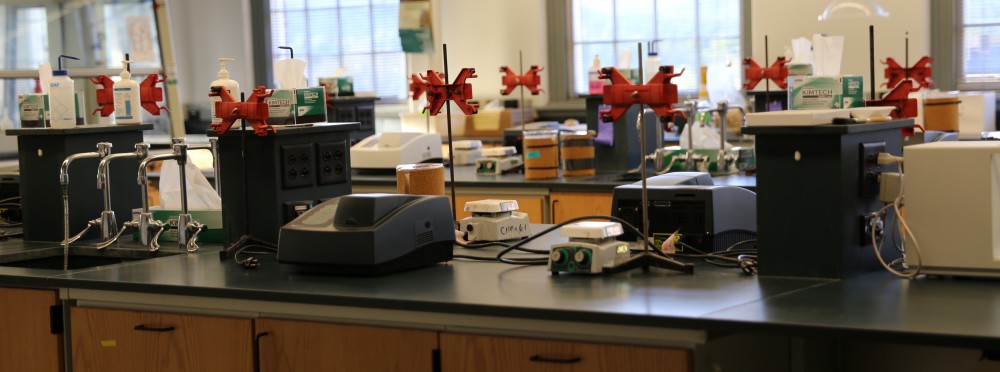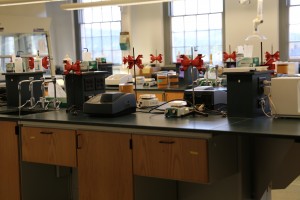Avogadro’s number is considered one of the few fundamental constants in chemistry. By definition, it is the number of Carbon atoms in exactly 12 grams of carbon. A mole of any substance contains an extremely large number of particles and will always be equal to the molar mass of the substance or element.
There are over twenty different methods used to determine the value of Avogadro’s number. In this week’s experiment you will utilize a method that entails counting the number of molecules present in a sample with a known mass.
Under appropriately controlled conditions, it is possible to spread a film of fatty substances that are only one molecule thick on a water surface. This single layer is commonly called a monolayer. The thickness of the monolayer can be calculated from the measured volume of the substance required to make the monolayer and the measured area of the surface that is covered. In today’s experiment you will use the fatty acid called Stearic acid to form the monolayer on a bed of water.
You will first calibrate a pipet/dropper in order to accurately measure the volume required to produce the monolayer. Then you will carefully measure the volume of stearic acid needed to form a monolayer. Since you will be given the molecular weight of stearic acid as well as the concentration of the stearic acid solution you will be able to calculate the number of molecules in the monolayer; and from this experimentally calculate Avogadro’s number.
Formation of a Stearic acid monolayer


